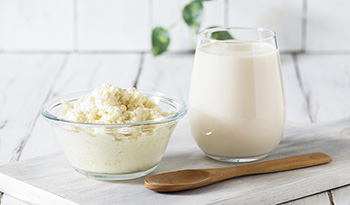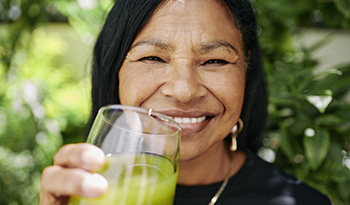10 abordări naturale pentru a sprijini sănătatea ochilor

Ce este o cataractă?
O cataractă este o tulburare progresivă formată în timp datorită faptului că cristalinul ochiului devine tulbure. Cataracta este clasificată de medici în trei tipuri - nucleară, corticală și subcapsulară posterioară și poate duce la o pierdere severă a vederii și uneori orbire completă dacă este lăsată netratată.
Chirurgia cataractei, o procedură în care lentila tulbure este îndepărtată și înlocuită cu una nouă, nu este întotdeauna posibilă. În țările în care oamenii au acces la servicii medicale, chirurgia cataractei este destul de rutină la cei cu vârsta de 60 de ani și peste. Cu toate acestea, există multe alte locuri din lume în care intervenția chirurgicală nu este o opțiune viabilă. Indiferent unde locuiți, prevenirea formării cataractei atunci când sunteți mai tânăr este o strategie care are sens.
Riscuri pentru cataractă
Medicii cred că oxidarea cristalinului este principalul motiv pentru care apare cataracta. Factorii de risc includ expunerea excesivă la lumina soarelui la ultraviolete, consumul de tutun, diabetul, hipertensiunea arterială și anumite medicamente, cum ar fi utilizarea pe termen lung a corticosteroizilor orali (prednison). Consumul excesiv de alcool predispune, de asemenea, la dezvoltarea cataractei.
Dieta și cataracta
Antioxidanții pot ajuta la protejarea împotriva dezvoltării cataractei. O dietă plină de fructe și legume colorate conține numeroși antioxidanți, care sunt benefici. Un studiu din 2010 a concluzionat că o dietă bogată în vitamine și minerale ar putea ajuta la întârzierea dezvoltării cataractei. Mai mult, un studiu din 2013 a arătat că o dietă bogată în fructe, legume și vitamina C ar putea ajuta la prevenirea formării cataractei în primul rând.
Multe ierburi, vitamine și minerale din alimente și suplimente au proprietăți antioxidante care pot ajuta la protejarea ochilor.
Luteină, Zeaxantină şi sănătate vizuală
Acești doi carotenoizi comuni sunt asociați cu o sănătate vizuală optimă. Un studiu publicat în Molecules în 2017 a arătat că luteina și zeaxantina au proprietăți antioxidante și de filtrare a luminii albastre, care pot ajuta la îmbunătățirea vederii. S-a descoperit că acești antioxidanți previn cataracta prin inhibarea deteriorării oxidative a cristalinului ochiului. Jurnalul a raportat că persoanele care au luat 6 până la 10 mg pe zi de luteină și-au redus șansele de intervenție chirurgicală de cataractă cu 20 până la 50%.
Cu toate acestea, majoritatea cercetărilor sugerează că combinarea ambelor luteină și zeaxantină oferă un beneficiu optim. Legumele și fructele cu frunze verzi sunt surse bune pentru ambele. Atunci când nu este consumat în mod adecvat prin dietă, trebuie luat un supliment de calitate. Doza sugerată: conform indicațiilor de pe etichetă.
Extractul de scoarță de pin este un antioxidant puternic
Un antioxidant puternic, extractul de scoarță de pin a fost folosit inițial de indigenii din America de Nord și Asia ca plantă medicinală. Expediționarul francez Jacques Cartier, care a revendicat Canada pentru Franța, ar fi folosit extract de scoarță de pin în timpul expediției sale din 1535 ca tratament pentru scorbut, o afecțiune cauzată de niveluri insuficiente de aport de vitamina C .
Astăzi, furnizorii de asistență medicală integrativă au realizat, de asemenea, numeroasele beneficii pentru sănătate și anti-îmbătrânire ale extractului de scoarță de pin, care a fost introdus pentru prima dată în Statele Unite ca supliment alimentar în 1987. Există mai multe formule pe piață și poate fi luată sub formă de capsulă, utilizată ca ulei esențial sau amestecată într-o loțiune și aplicată local.
Antioxidanții sunt substanțe care protejează țesuturile și organele împotriva radicalilor liberi dăunători. Un studiu din Ophthalmic Research a demonstrat că potența antioxidantă a picnogenolului a fost mai puternică decât vitamina C, vitamina E, acid alfa-lipoicși coenzima Q10.
Un studiu pe animale din 2017 realizat de Dr. J. Kim a arătat că extractul de scoarță de pin ar putea preveni formarea cataractei. Un studiu din 2013 a susținut, de asemenea, aceste constatări. Doza sugerată: 50 până la 250 mg o dată sau de două ori pe zi.
Quercetină şi beneficii antiinflamatorii
Polifenolul quercetin este un antioxidant puternic care s-a dovedit a avea efecte antiinflamatorii și beneficii vizuale. Unele studii demonstrează, de asemenea, că quercetina are unele efecte pozitive asupra microbiomului intestinal, ceea ce înseamnă că ajută bacteriile intestinale sănătoase să prospere.
Sursele alimentare includ merișoare, struguri negri, zmeură, legume cu frunze verzi, broccoli, ceapă roșie crudă, ceai negru și ceai verde .
Un studiu din 2010 a discutat posibilele mecanisme prin care quercetina ar putea ajuta la prevenirea dezvoltării cataractei. Un studiu din 2019 a explorat, de asemenea, rolul quercetinei în prevenirea cataractei la cei cu diabet. Doza sugerată: conform indicațiilor de pe etichetă.
Beneficiile protectoare ale resveratrolului
Resveratrolul sa dovedit a avea multe funcții. Un fitonutrient, resveratrolul este un compus natural, pe bază de plante care se găsește în vinul roșu, struguri, fructe de pădure și nuci. Proprietățile sale antioxidante protejează celula și componentele sale de deteriorarea oxidativă, ceea ce determină frecvent celula să-și piardă capacitatea de a se controla. De asemenea, poate duce la un risc crescut de cataractă.
Un studiu din 2006 a concluzionat că consumul de alimente bogate în resveratrol ar putea contribui la reducerea riscului de apariție a cataractei la vârstnici. De asemenea, un studiu din 2016 a demonstrat, de asemenea, beneficiile protectoare ale resveratrolului. Doza sugerată: conform indicațiilor de pe etichetă.
Seleniul poate ajuta la combaterea daunelor oxidative
Seleniul este considerat un oligomineral care joacă un rol important în corpul uman. Este necesar pentru mai mult de 24 de reacții biochimice, iar prezența sa este necesară pentru reproducerea celulelor, sinteza ADN-ului și pentru a ajuta la protejarea împotriva daunelor oxidative. Seleniul există atât sub formă non-organică, cât și organică.
Sursele alimentare de seleniu includ nuci braziliene, carne de organe și fructe de mare. Poate fi găsit și în păsări de curte, ouă, cereale și produse lactate.
Datorită capacității sale de a ajuta la reducerea daunelor oxidative, pare a fi de ajutor în prevenirea cataractei. Un studiu din 2012 folosind șobolani a arătat beneficiul protector al seleniului în prevenirea cataractei. Mai mult, un studiu din 2018 a concluzionat: „Datorită unei asocieri confirmate între nivelurile serice de seleniu și cataracta legată de vârstă, nivelurile scăzute de seleniu seric pot constitui un factor de risc potențial al cataractei legate de vârstă”. Doza sugerată: conform indicațiilor de pe etichetă.
Activităţile antiinflamatorii şi antioxidante ale Spirulinei
Spirulina este considerată un superaliment de mulți. Este un supliment nutritiv ușor digerabil, care aparține unei familii de alge albastre-verzi și poate fi luat sub formă de pastile sau pulbere. Spirulina provine dintr-un tip de bacterii pe care oamenii de știință le numesc cianobacterium, în special arthrospira platensis.
În mod tradițional, spirulina a crescut în lacurile calde alcaline din Africa, Hawaii și Mexic, printre alte locuri. Spirulina a fost folosită cu secole în urmă de către azteci, conform înregistrărilor spaniole de la conchistadori - a crescut în Lacul Texcoco, Mexic, unde aztecii au numit-o tecuilati. Exploratorii europeni au observat localnicii din apropierea lacului Ciad din Africa folosindu-l ca hrană. În epoca noastră modernă, spirulina a câștigat atenția oamenilor de știință NASA , care au folosit-o ca un supliment nutritiv sănătos pentru astronauții din spațiul cosmic.
Spirulina conține o sursă completă de proteine, vitamine, minerale și fitonutrienți. În plus, spirulina are proprietăți antiinflamatorii și antioxidante, care explică modul în care acestea pot ajuta la prevenirea cataractei.
Studiile din 2013 și 2014 arată că consumul de spirulină poate ajuta la oprirea dezvoltării cataractei . Doza sugerată: conform indicațiilor de pe etichetă.
Beneficiile antioxidante studiate ale vitaminei C
Vitamina C, cunoscută și sub numele de acid ascorbic sau ascorbat, a fost una dintre cele mai cercetate vitamine în ultimii 100 de ani. O căutare a literaturii științifice arată că peste 65.000 de studii au fost efectuate asupra vitaminei C încă din anii 1920. Multe descoperiri arată că ajută la promovarea unui sistem imunitar puternic, precum și la sănătatea cardiovasculară, a creierului și a ochilor, printre multe alte beneficii.
Mulți oameni de știință cred că la un moment dat corpul uman avea capacitatea de a produce vitamina C, dar a pierdut această capacitate în timp. În esență, toate speciile de animale, inclusiv majoritatea mamiferelor, pot produce vitamina C - excepțiile sunt oamenii, maimuțele și cobaii. Creierul și glandele suprarenale au cele mai mari concentrații de vitamina C, de 15 până la 50 de ori mai mari decât cele găsite în sânge. Vitamina C, care are proprietăți antioxidante, este, de asemenea, un „co-factor” enzimatic pentru cel puțin opt reacții biochimice importante.
Conform unui studiu din 2009 publicat în Jurnalul American de Nutriție Clinică, peste șapte la sută dintre persoanele cu vârsta de șase ani și peste aveau deficit de vitamina C atunci când li s-a testat sângele. Mai mult de jumătate dintre cei chestionați au consumat cantități mici de alimente bogate în vitamina C. Aceste alimente includ citrice, căpșuni, mango, ardei și multe altele.
Un studiu realizat în 2011 din India a constatat că cei cu cele mai scăzute niveluri de vitamina C în sânge aveau cu 39% mai multe șanse de a dezvolta cataractă comparativ cu cei cu niveluri mai ridicate de vitamina C în sânge.
În plus, un studiu din 2014 în Oftalmologie a demonstrat, de asemenea, că cei cu niveluri mai mari de vitamina C în sânge au fost mai puțin susceptibili de a avea cataractă. Alte studii au arătat rezultate similare. Doza sugerată: 500 până la 2.000 mg pe zi.
Multivitamine pentru sănătatea generală
Nu ar trebui să se aștepte niciodată ca o multivitamină să înlocuiască o dietă sănătoasă și completă. Organizația Mondială a Sănătății estimează că 2 miliarde de oameni din întreaga lume au un aport inadecvat de vitamine și minerale. Studiile arată că mulți americani au, de asemenea, un aport inadecvat de mai multe vitamine și minerale esențiale. Recentele orientări dietetice pentru americani 2015-2020 au identificat vitaminele solubile în grăsimi A, D, E ca fiind subconsumate, în timp ce vitamina C solubilă în apă și colina au fost, de asemenea, sub-consumate.
Un studiu din 2014 în Nutrienți a arătat că cei care au luat multivitamine au avut cu 34% mai puține șanse de a dezvolta cataractă. Un multivitamin de calitate poate ajuta la asigurarea unei asigurări suplimentare.
Un studiu din 2014 în Oftalmologie a publicat rezultatele unui studiu randomizat, dublu-orb, controlat cu placebo. În total, studiul a urmărit 14.641 medici bărbați americani cu vârsta ≥50 de ani timp de peste 11 ani. Jumătate au luat zilnic multivitamine, în timp ce cealaltă jumătate un placebo. La sfârșitul studiului, cei care au luat multivitamine au avut cu 9% mai puțină cataractă. Este important de menționat că majoritatea multivitaminelor conțin doar aproximativ 60 mg de vitamina C, o doză minimă. Mulți dintre cei care iau multivitamine suplimentează adesea cu vitamine individuale suplimentare, după cum este necesar. Doza de multivitamine sugerată: conform indicațiilor de pe etichetă.
Referințe:
- Mares JA, Voland R, Adler R și colab. Dietele sănătoase și prevalența ulterioară a cataractei nucleare la femei. Arch Oftalmol. 2010; 128 (6): 738‐749. doi: 10.1001/archophthalmol.2010.84
- Pastor-Valero M. Aportul de fructe și legume și vitaminele C și E sunt asociate cu o prevalență redusă a cataractei la o populație mediteraneană spaniolă. BMC Oftalmologie. 2013; 13:52. doi: 10.1186/1471-2415-13-52.
- 3 Jia, Yu-Ping și colab. Efectele farmacologice ale luteinei și zeaxantinei asupra tulburărilor vizuale și bolilor cognitive. Molecule. 2017
- Hayashi R, Hayashi S, Arai K, Sakai M, Okamoto H, Chikuda M. Efectele antioxidante diferențiate de gen ale unui supliment care conține luteină în umorul apos al pacienților cu cataractă senilă. Exp Eye Res. 2014; 129:5-12. doi: 10.1016/j.exer.2014.10.009
- Iravani S, Zolfaghari B. Efectele farmaceutice și nutraceutice ale extractului de scoarță Pinus pinaster. Res Pharm Sci. 2011; 6 (1) :1-11.
- Kim J, Choung SY. Extractul de scoarță de Pinus densiflora previne formarea cataractei induse de selenit în cristalinul puilor de șobolan Sprague Dawley. Viziune moleculară. 2017; 23:638-648.
- Trevithick JR, Bantseev V, Hirst M, Dzialoszynski TM, Sanford ES. Este picnogenolul o sabie cu două tăișuri? Cataractogenic in vitro, dar reduce riscul de cataractă la șobolanii diabetici. Curr Eye Res. 2013; 38 (7): 751-760. doi: 10.3109/02713683.2013.770038
- Food Chem Toxicol. 2018 octombrie 15. pii: S0278-6915 (18) 30775-0. doi: 10.1016/j.fct.2018.10.042.
- Stefek M, Karasu C. Lentilele oculare în îmbătrânire și diabet: efectul quercetinei. Rejuvenare Res. 2011; 14 (5): 525‐534. doi: 10.1089/rej.2011.1170
- Patil KK, Meshram RJ, Barage SH, Gacche RN. Flavonoidele dietetice inhibă glicarea proteinelor cristalinului: implicații în gestionarea cataractei diabetice. 3 Biotech. 2019; 9 (2) :47. doi: 10.1007/s13205-019-1581-3
- Doganay S, Borazan M, Iraz M, Cigremis Y. Efectul resveratrolului în modelul experimental de cataractă format din selenit de sodiu. Curr Eye Res. 2006; 31 (2): 147-153. doi: 10.1080/02713680500514685
- Biomed Pharmacother. 2017 februarie; 86:232-241. doi: 10.1016/j.biopha.2016.11.141. Epub 2016 19 decembrie.
- Zhu X, Lu Y. Suplimentarea cu seleniu poate încetini dezvoltarea cataractei naftalenice. Curr Eye Res. 2012; 37 (3): 163-169. doi: 10.3109/02713683.2011.639123
- Post M, Lubiński W, Lubiński J și colab. Nivelurile serice de seleniu sunt asociate cu cataracta legată de vârstă. Ann Agric Environ Med. 2018; 25 (3) :443-448. doi: 10.26444/aaem/90886
- Karkos PD, Leong SC, Karkos CD, Sivaji N, Assimakopoulos DA. Spirulina în practica clinică: aplicații umane bazate pe dovezi. Medicină complementară și alternativă bazată pe dovezi : eCam. 2011; 2011:531053. doi: 10.1093/ecam/nen058.
- Spirulina, întreaga revoluție alimentară de Larry Switzer
- https://ntrs.nasa.gov/archive/nasa/casi.ntrs.nasa.gov/19890016190.pdf
- Biol Trace Elem Res. 2013 ianuarie; 151 (1): 59-67. doi: 10.1007/s12011-012-9526-2. Epub 2012 20 octombrie.
- Gaby, Alan. Medicină nutrițională, ediția a doua aprilie 2017 Harrison FE, May JM. Funcția vitaminei C în creier: rolul vital al transportorului ascorbat SVCT2. Radic Biol Med gratuit. 2009; 46 (6): 719—30. doi: 10.1016/j.freeradbiomed.2008.12.018.
- Jurnalul American de Nutriție Clinică. 2009 noiembrie; 90 (5): 1252-63. doi: 10.3945/ajcn.2008.27016. Epub 2009 12 august.
- Ravindran RD, Vashist P, Gupta SK și colab. Asocierea inversă a vitaminei C cu cataracta la persoanele în vârstă din India. Oftalmologie. 2011; 118 (10): 1958-1965.e2. doi: 10.1016/j.ophtha.2011.03.016.
- Heruye SH, Maffofou Nkenyi LN, Singh NU și colab. Tendințe actuale în farmacoterapia cataractei. Produse farmaceutice (Basel). 2020; 13 (1): 15. Publicat în 2020 16 ianuarie. doi:10.3390/ph13010015
- Allen L., de Benoist B., Dary O., Hurrell R. Ghiduri privind fortificarea alimentelor cu micronutrienți. Organizația Mondială a Sănătății; Geneva, Elveția: 2006
- Departamentul Sănătății și Serviciilor Umane din SUA. Departamentul Agriculturii din SUA. Orientări dietetice 2015—2020 pentru americani. Ediția a 8-a. USDA; Washington, DC, SUA: 2015. [(accesat la 17 ianuarie 2017)]. Disponibil online: http://health.gov/dietaryguidelines/2015/guidelines/
- Zhao L-Q, Li L-M, Zhu H, Grupul de cercetare a studiului bolilor oculare bazate pe dovezi epidemiologice. Efectul suplimentelor multivitamine/minerale asupra cataractei legate de vârstă: o revizuire sistematică și meta-analiză. Nutrienți. 2014; 6 (3): 931-949. doi: 10.3390/nu6030931.
- Christen WG, Glynn RJ, Manson JE și colab. Efectele suplimentului multivitaminic asupra cataractei și degenerescenței maculare legate de vârstă într-un studiu randomizat al medicilor de sex masculin. Oftalmologie. 2014; 121 (2): 525‐534. doi: 10.1016/j.ophtha.2013.09.038
Declarație de declinare a responsabilității:Acest blog nu are ca scop să ofere un diagnostic.










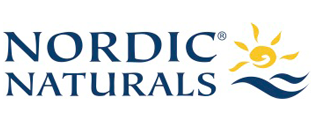


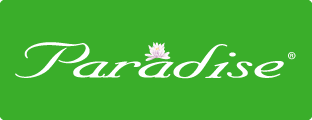
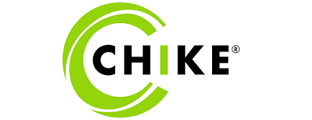


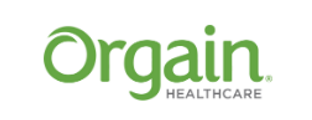

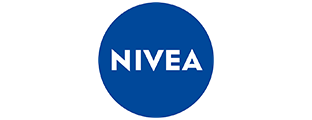




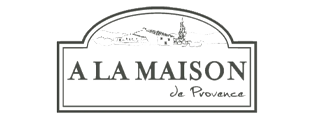


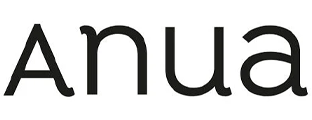
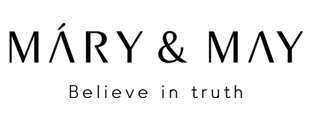

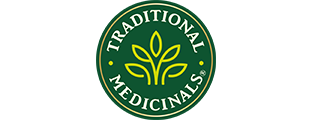


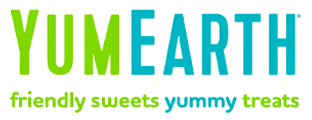





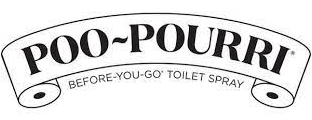

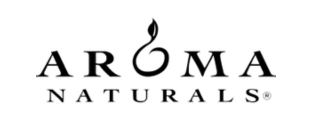
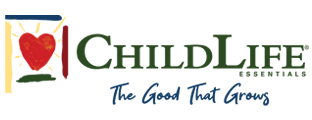




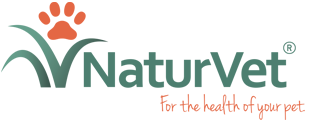





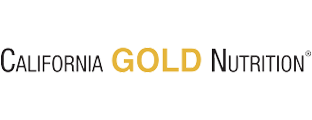
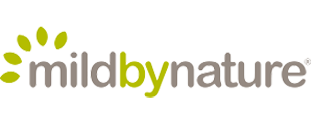

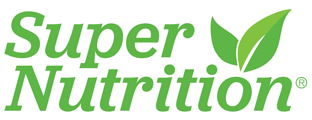
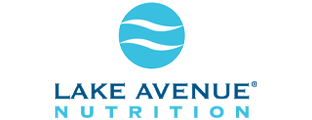




















 Cuprins
Cuprins




